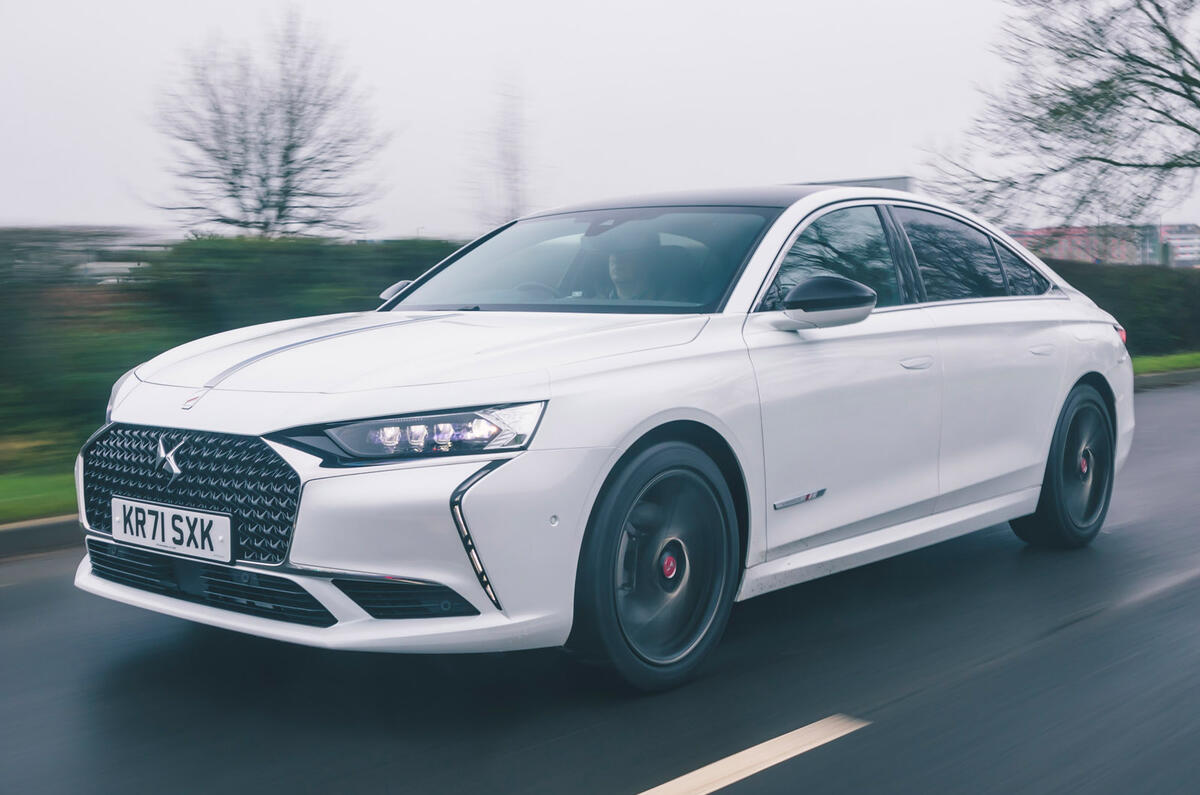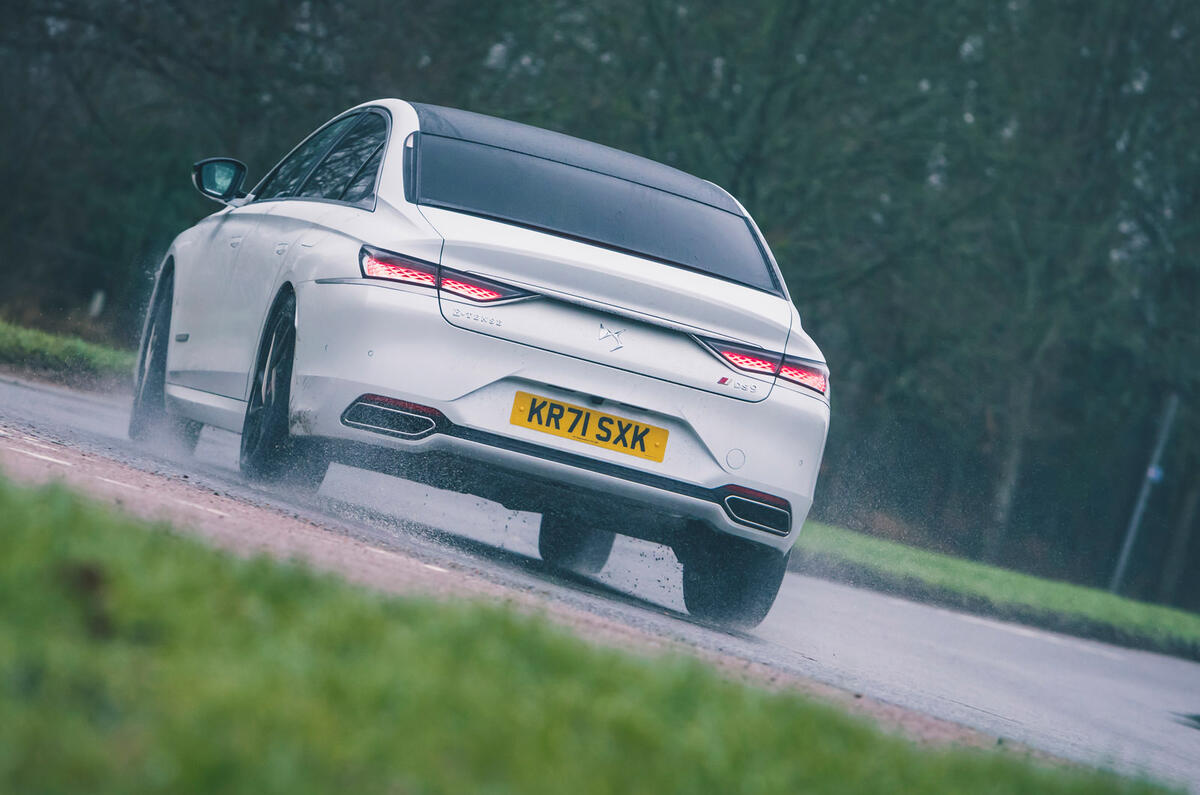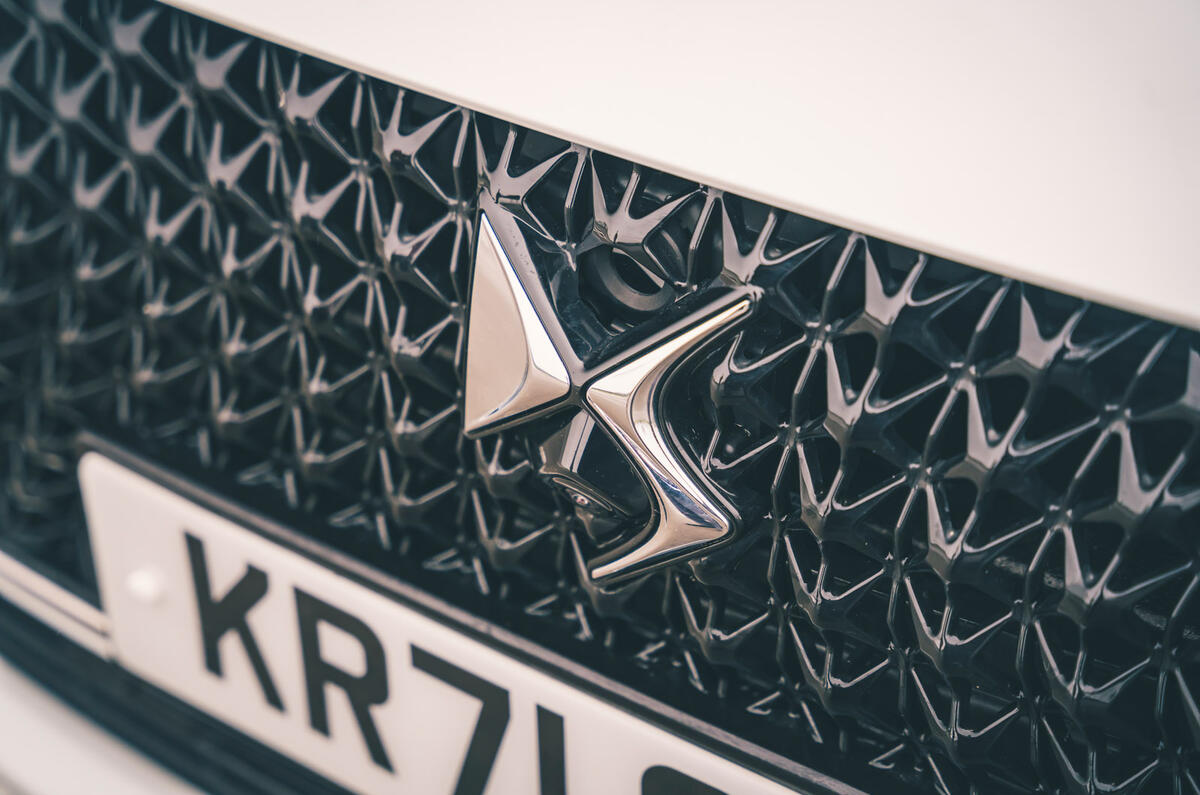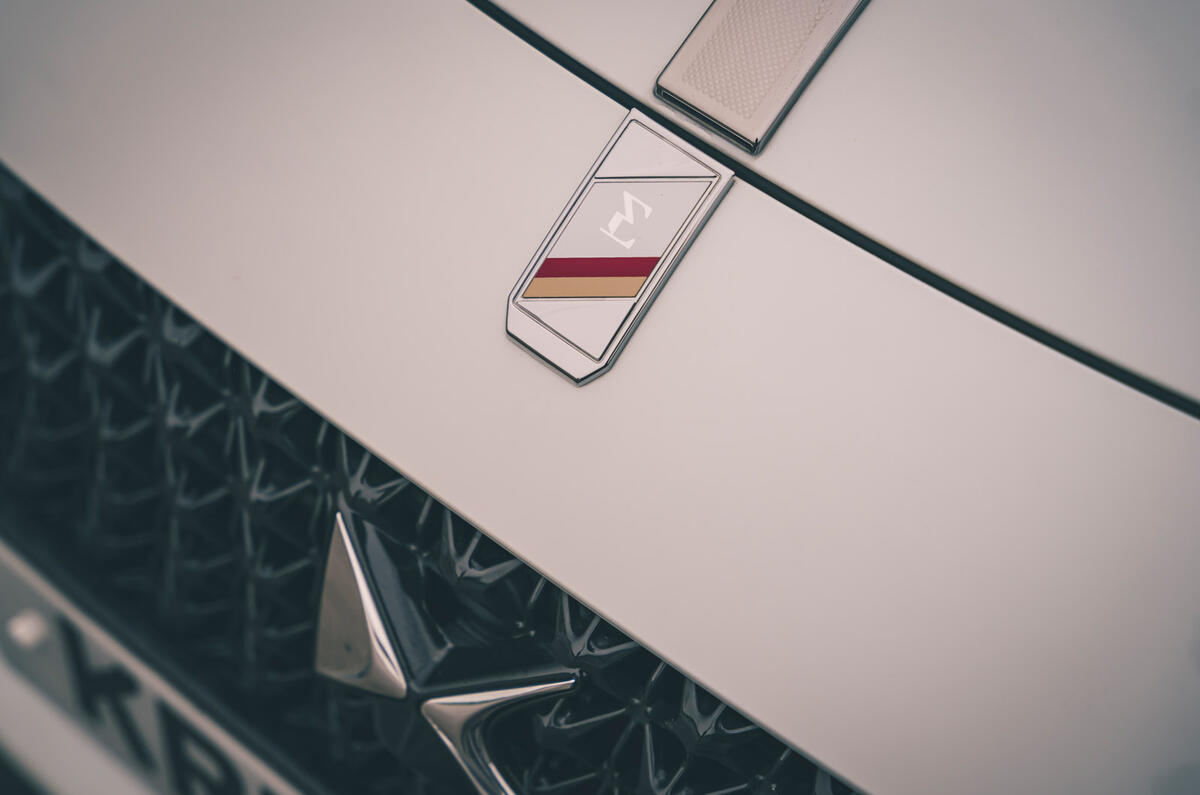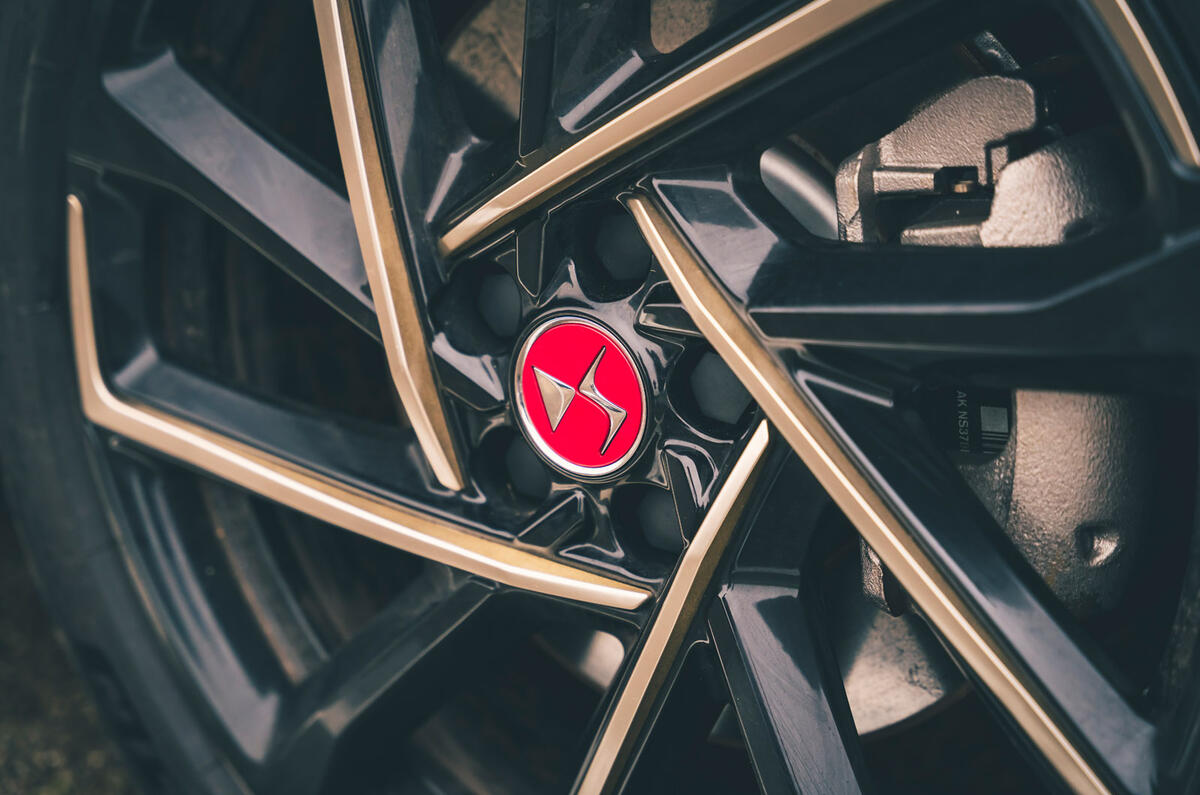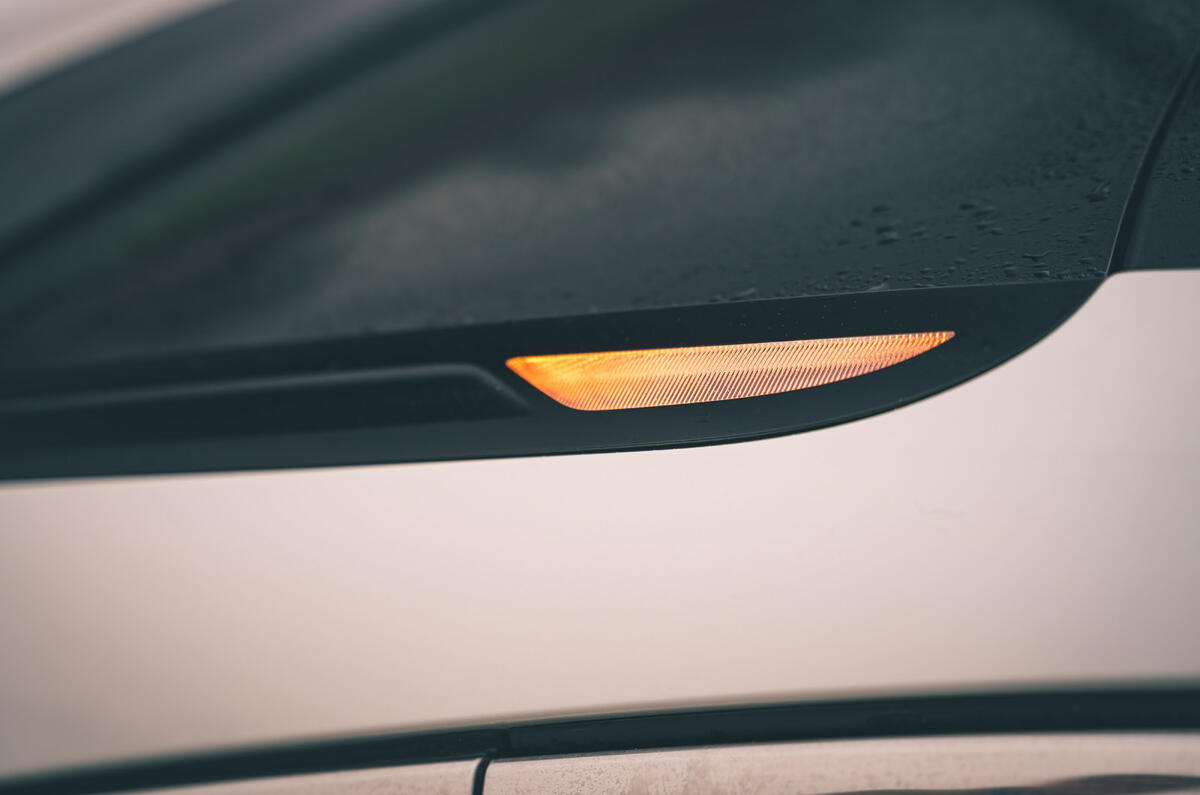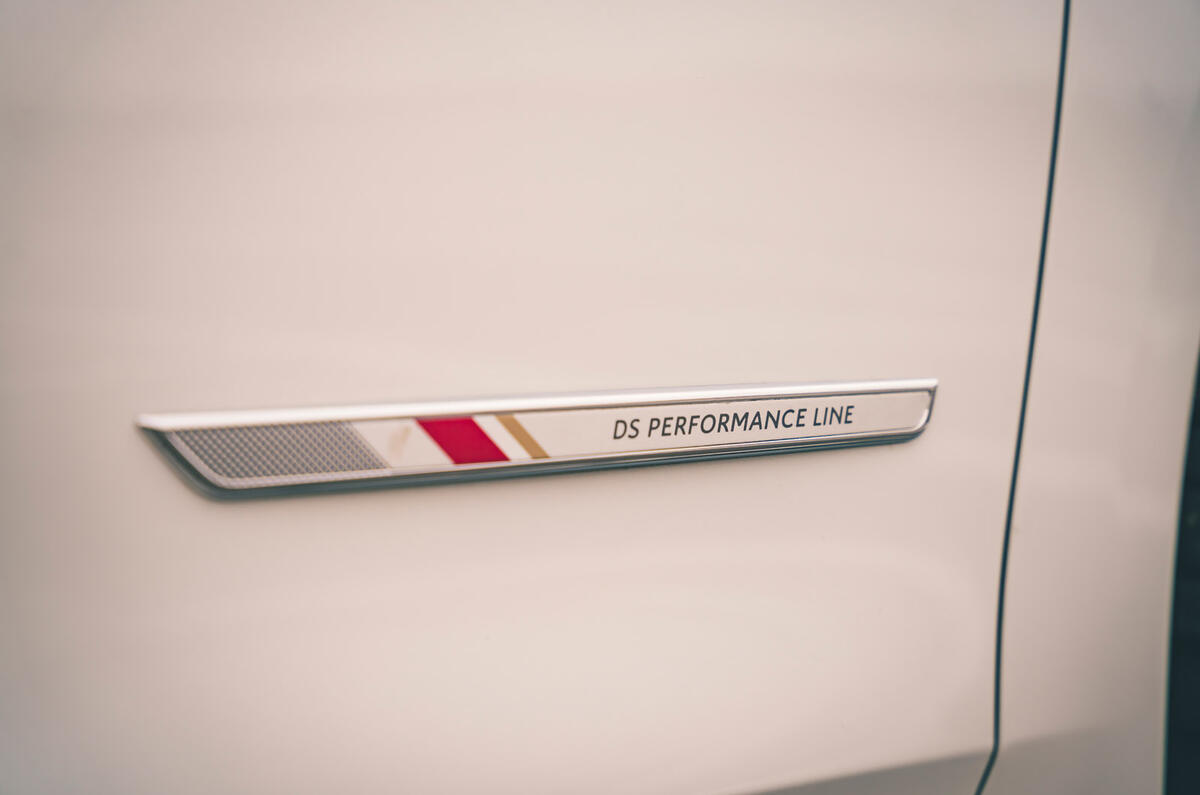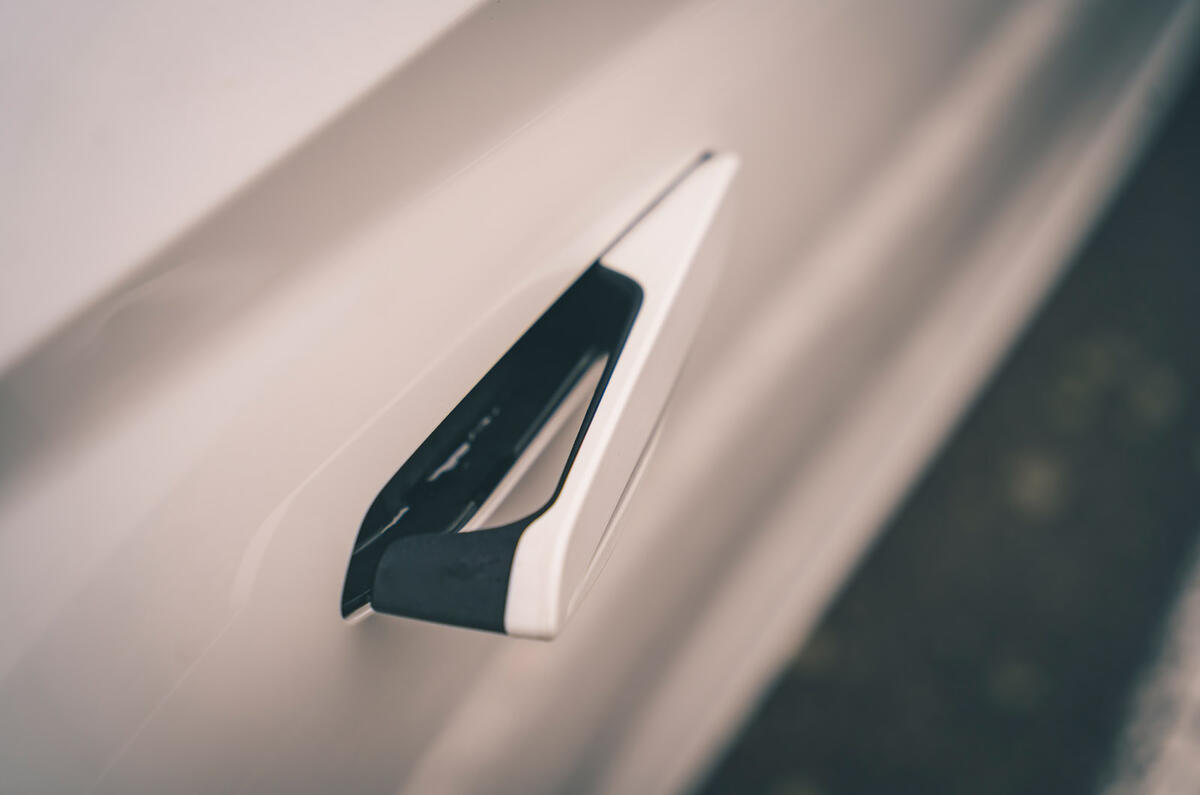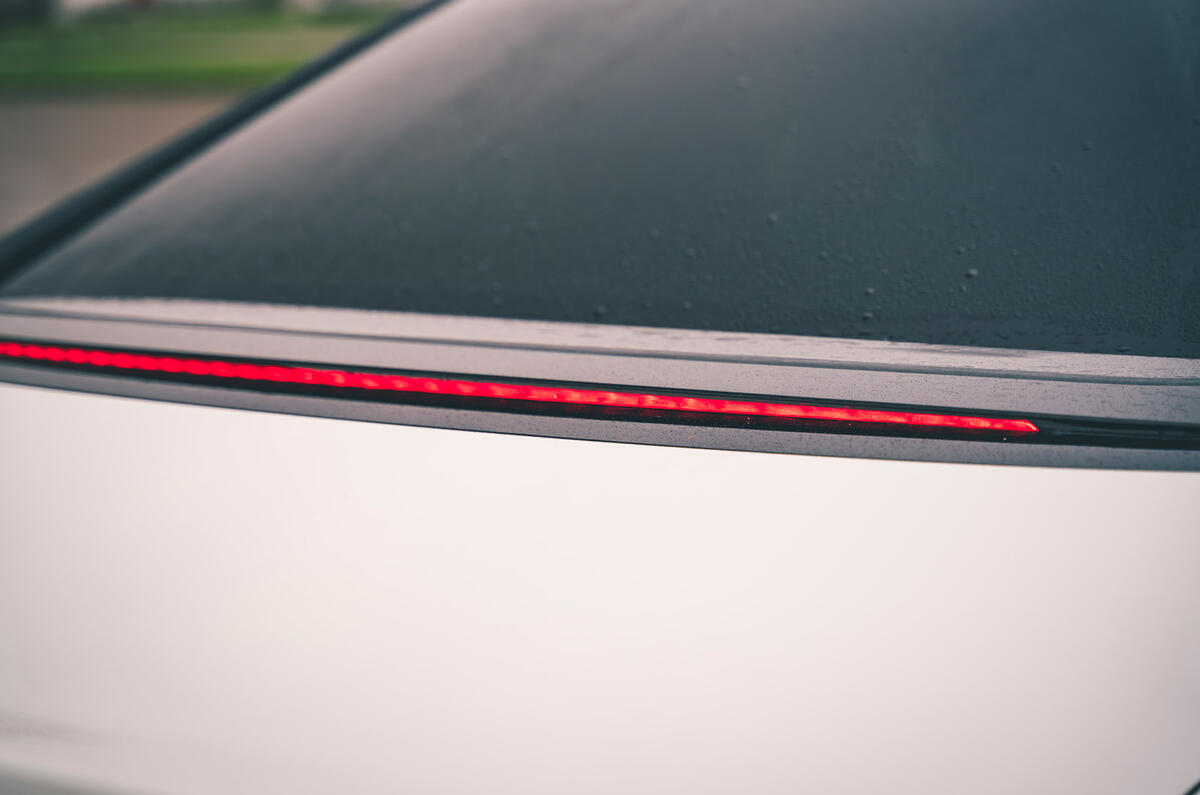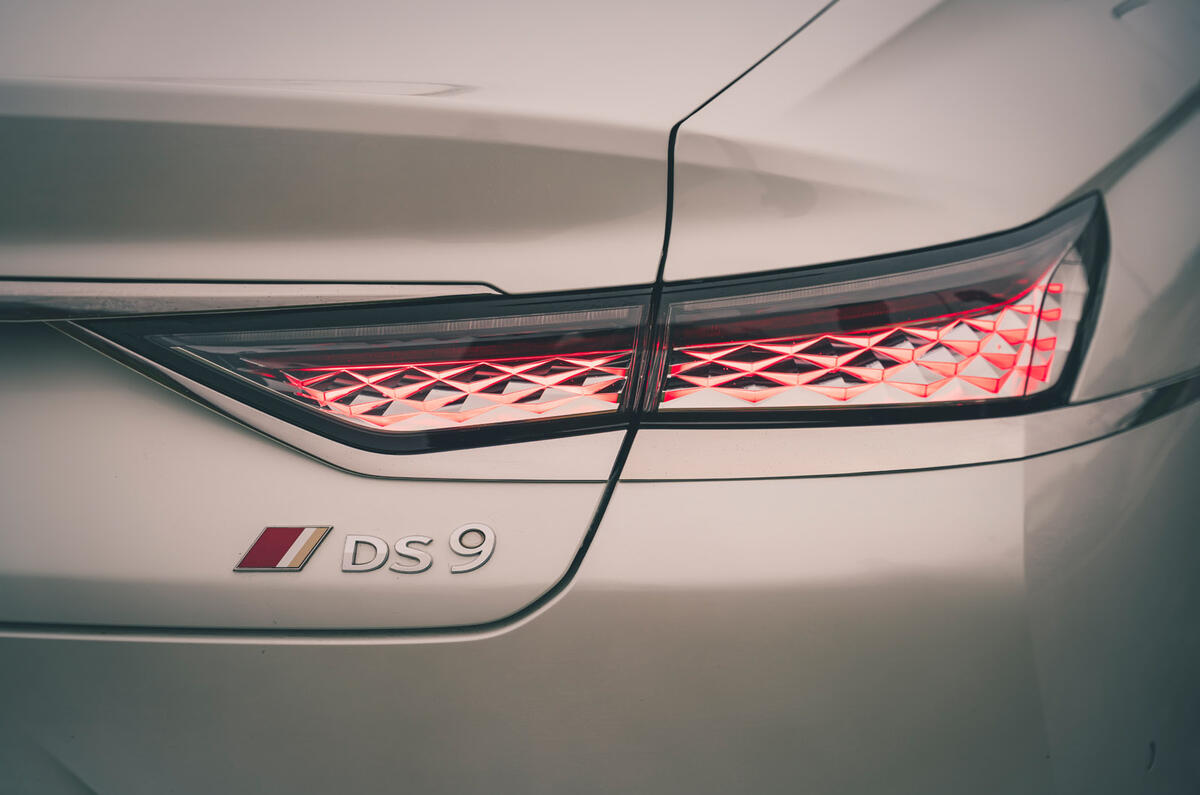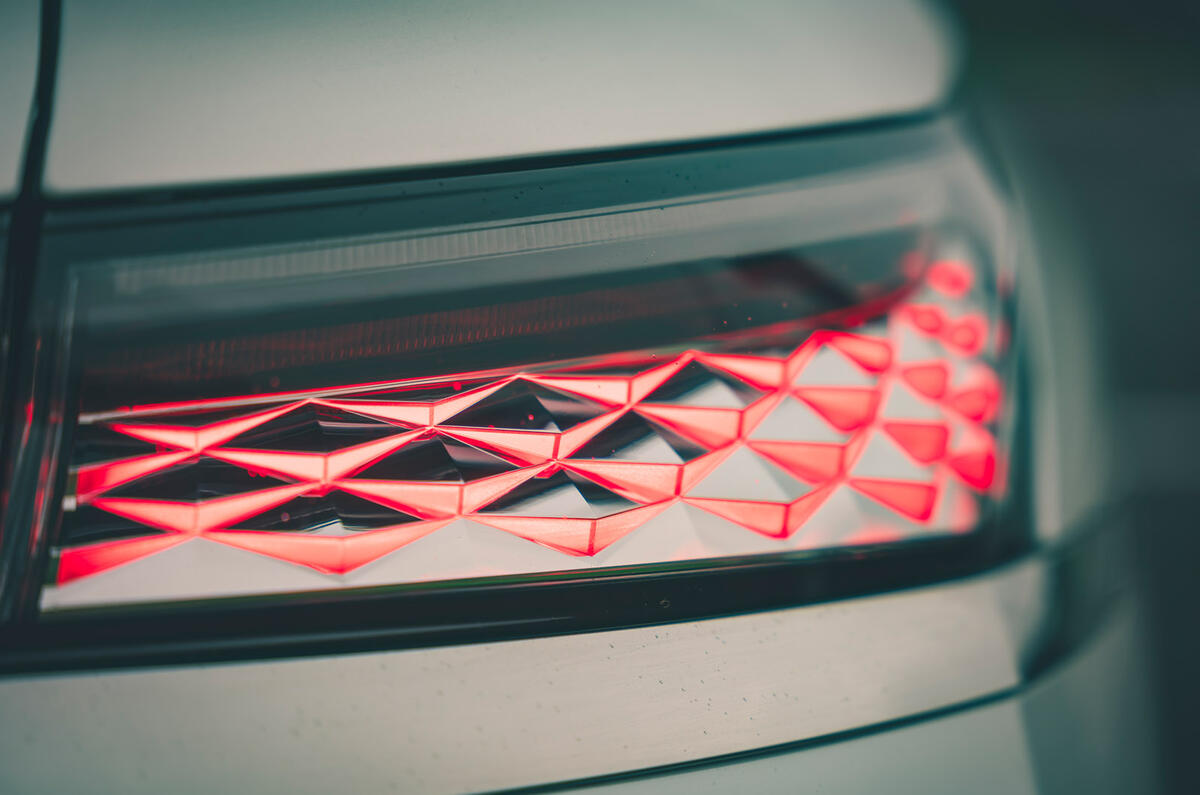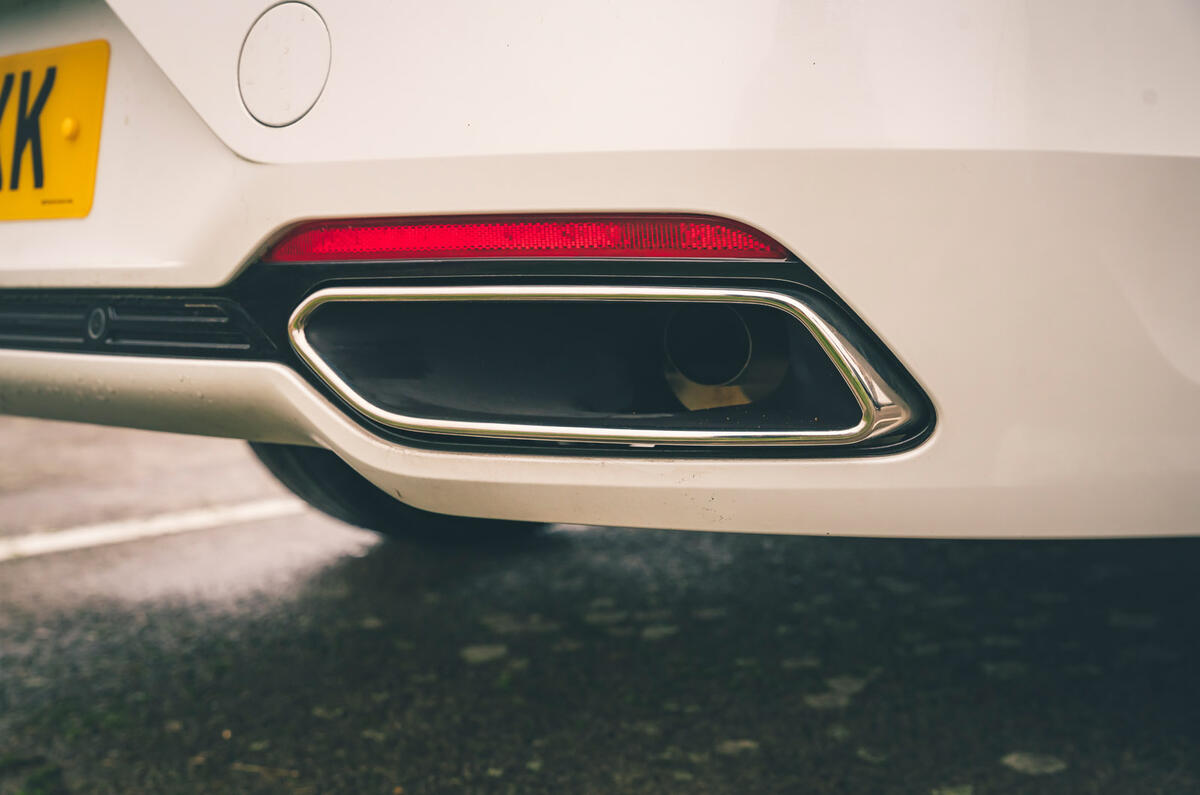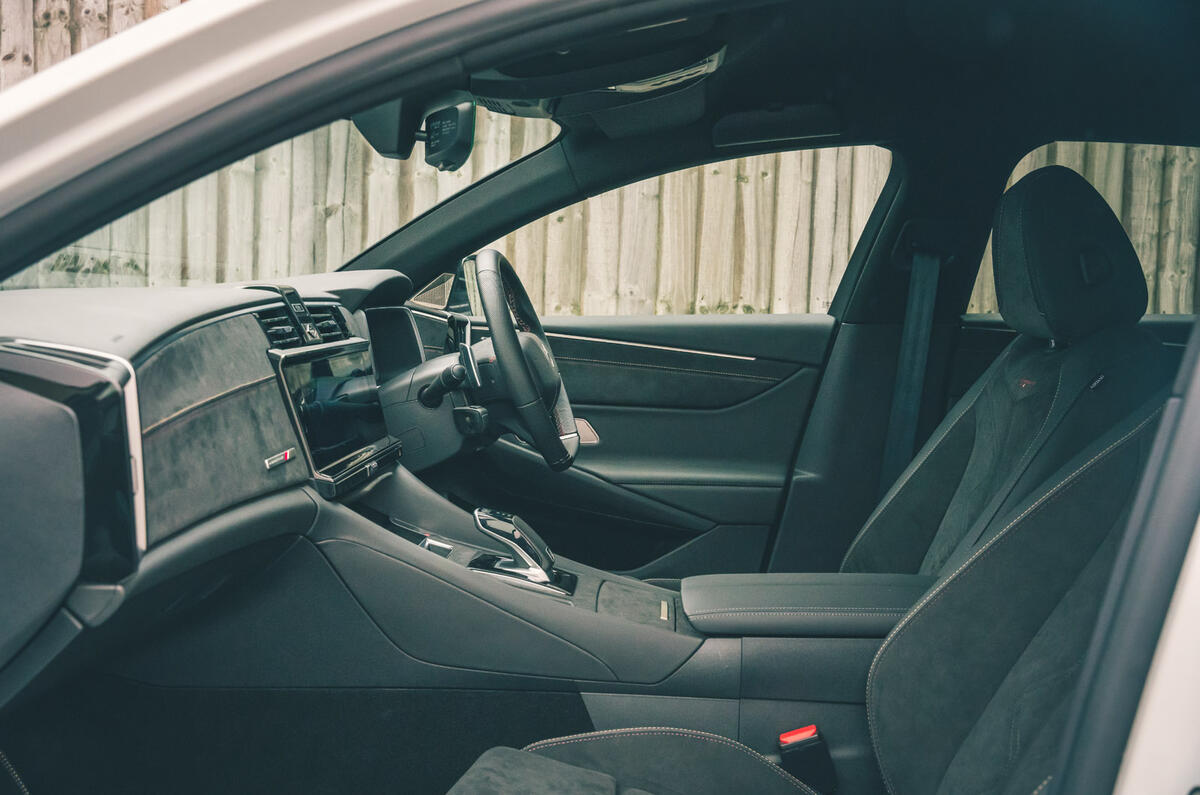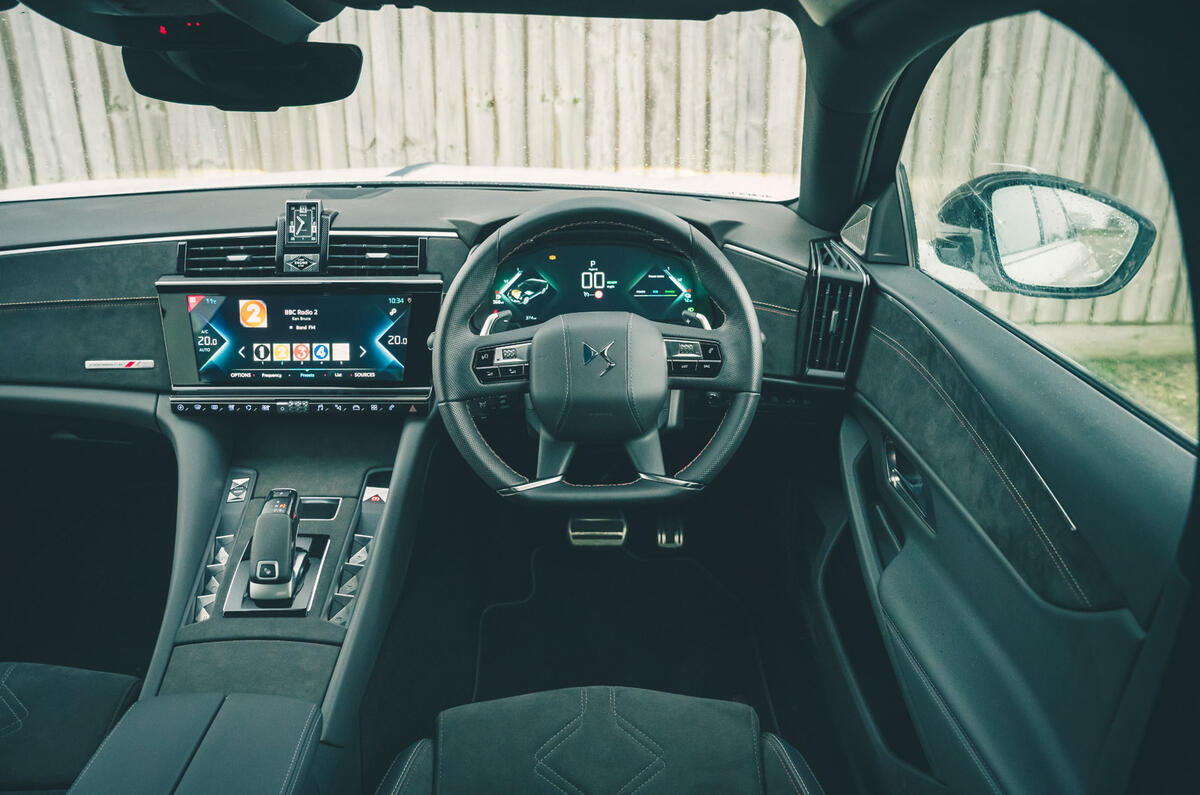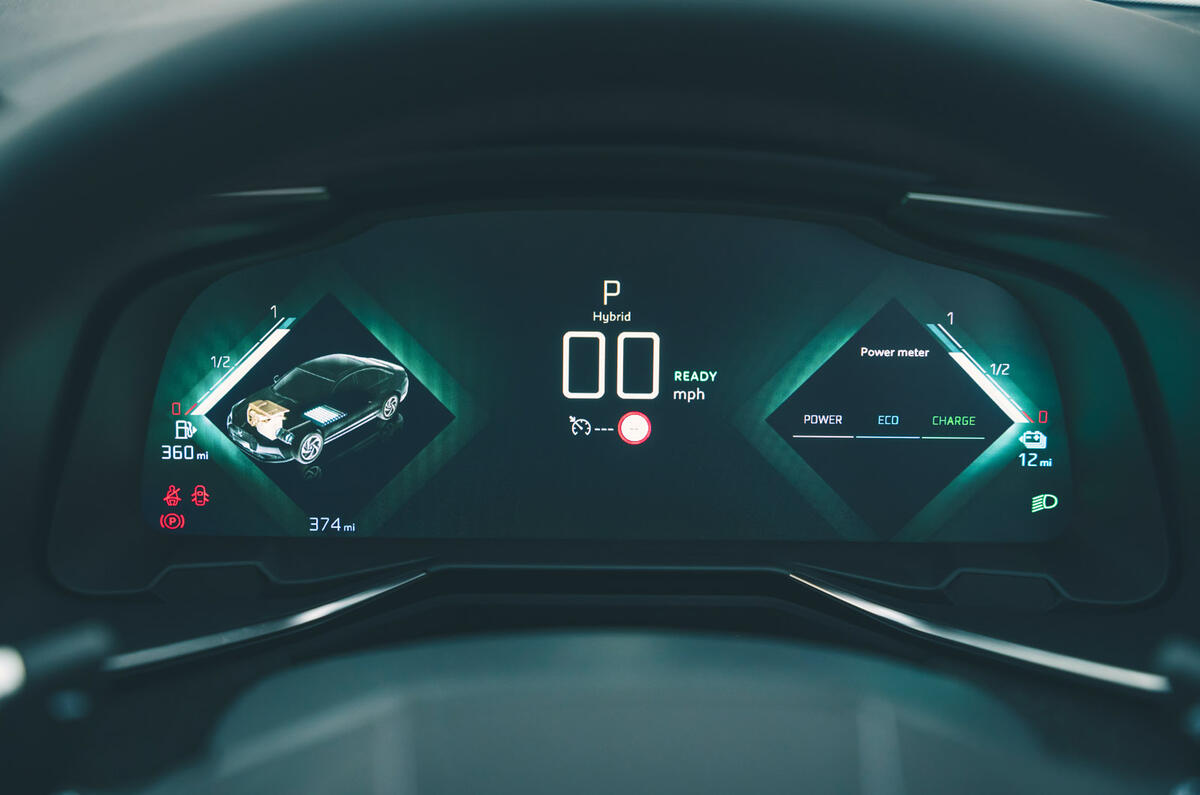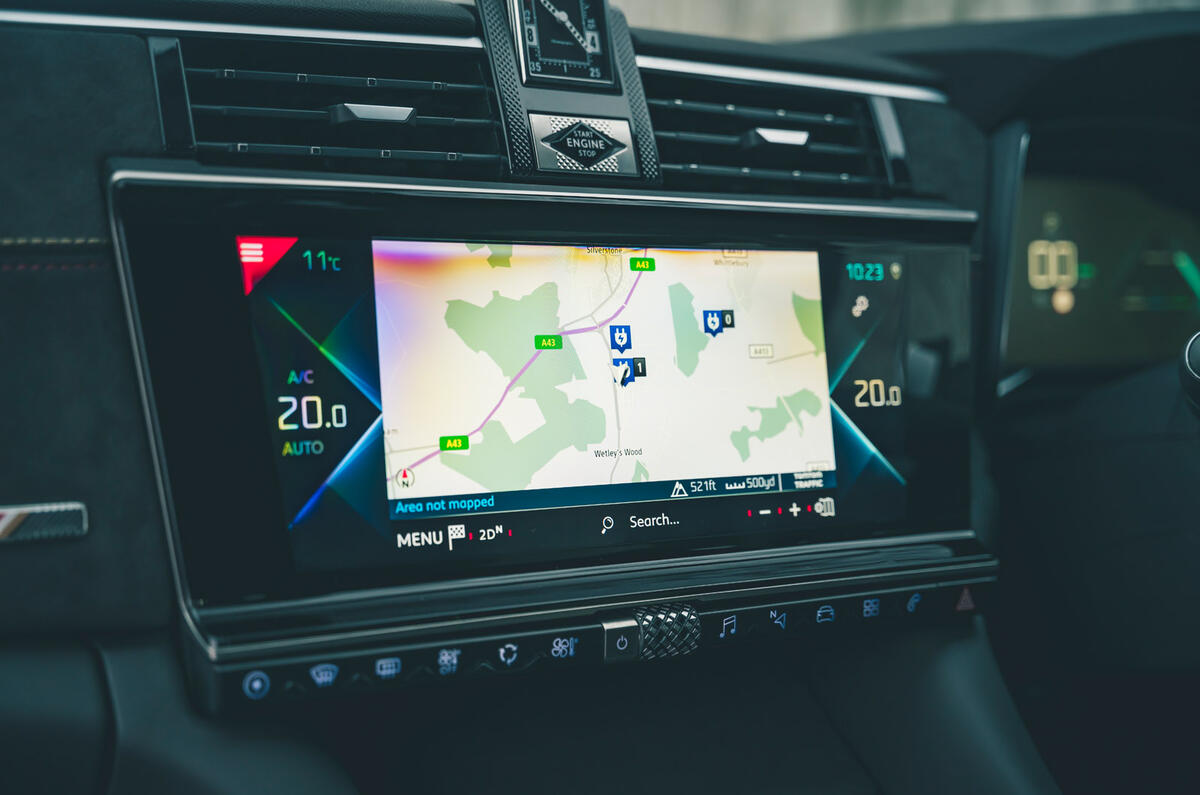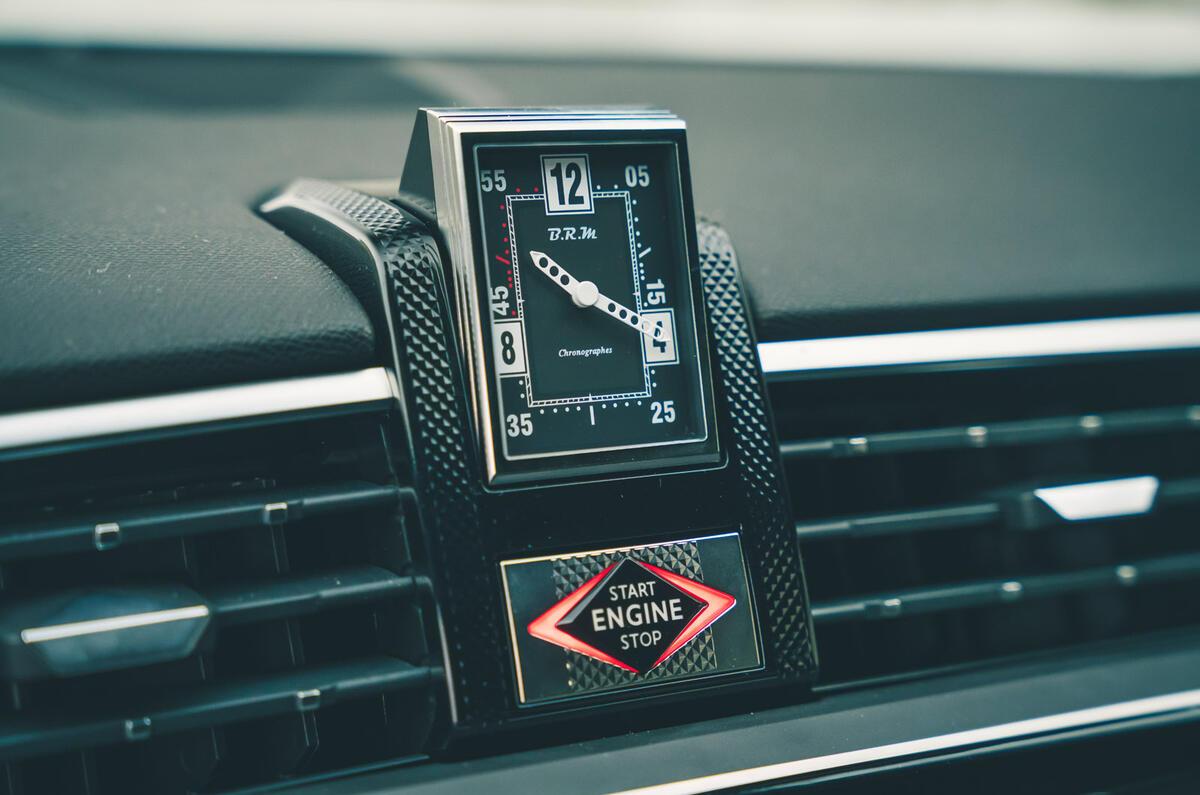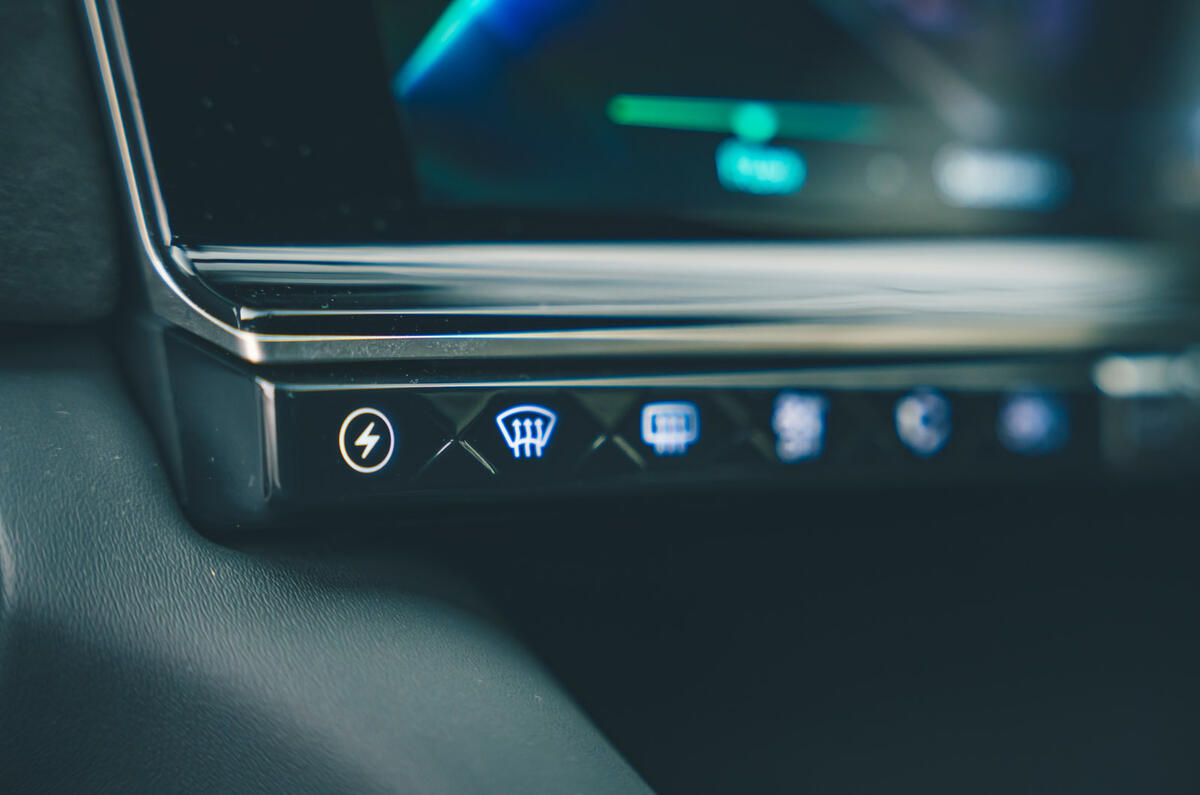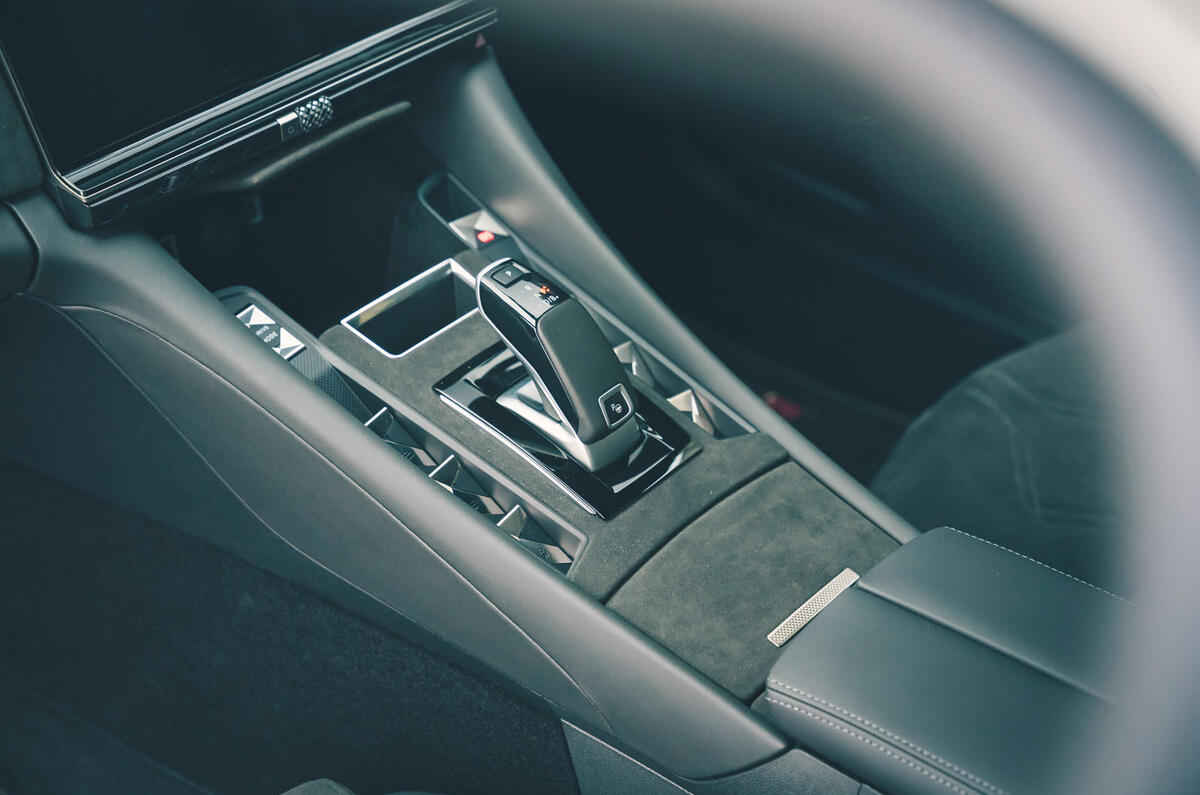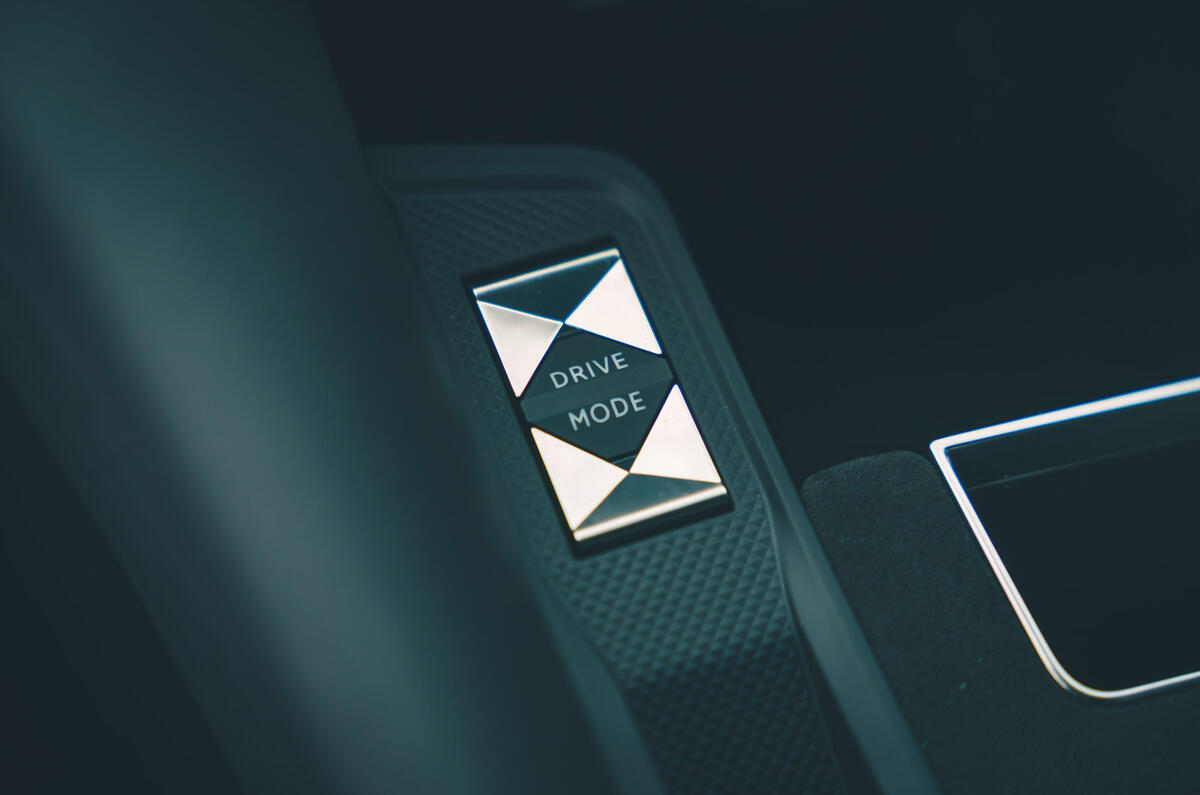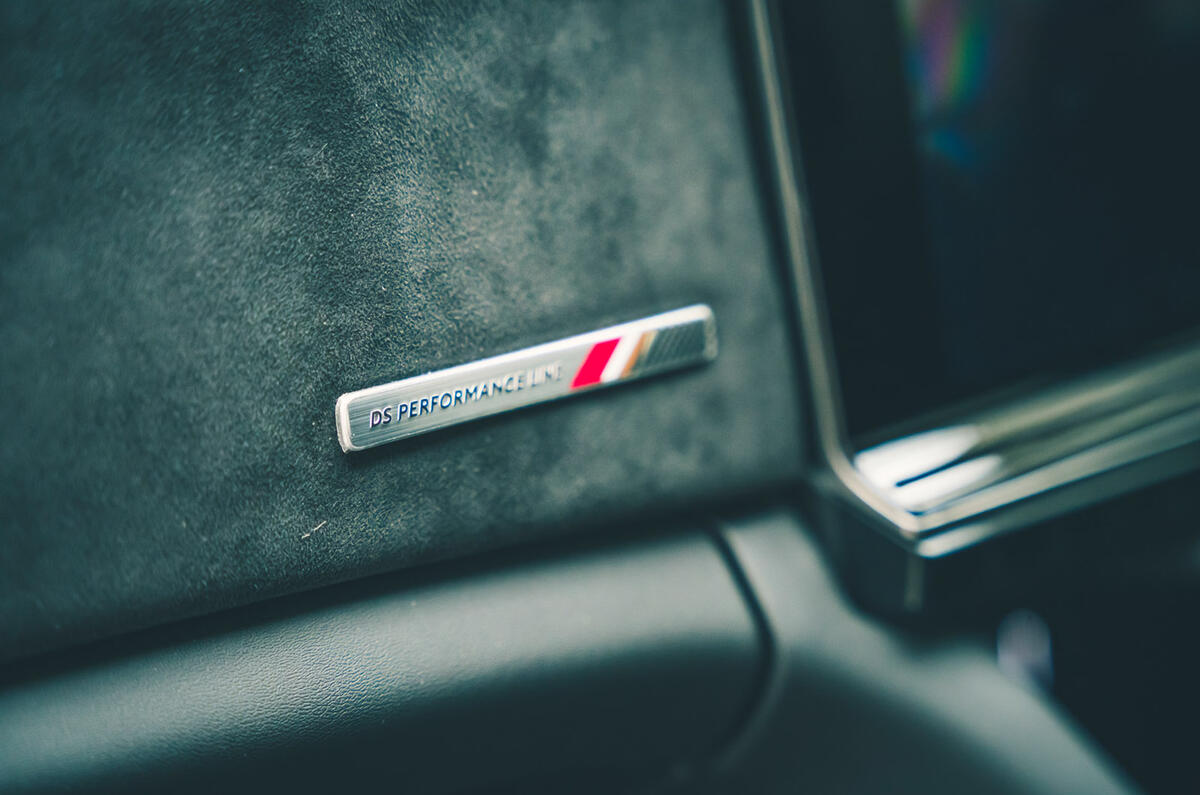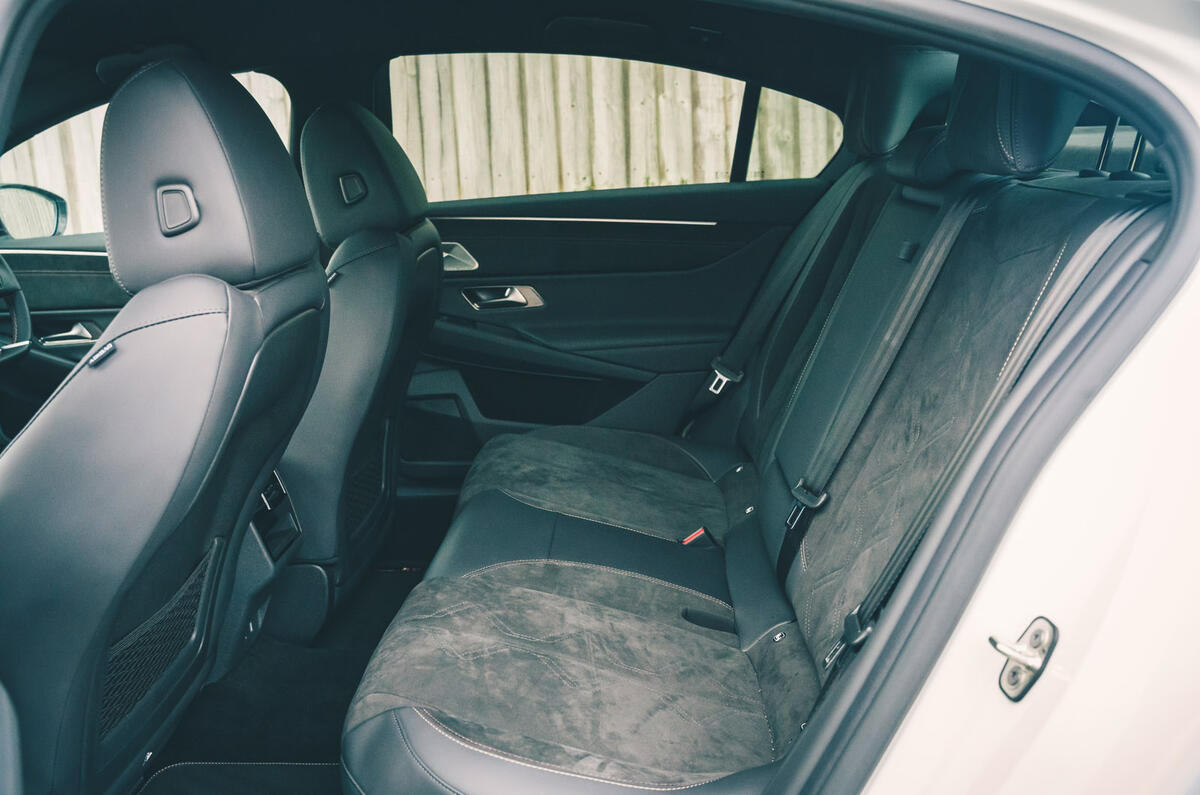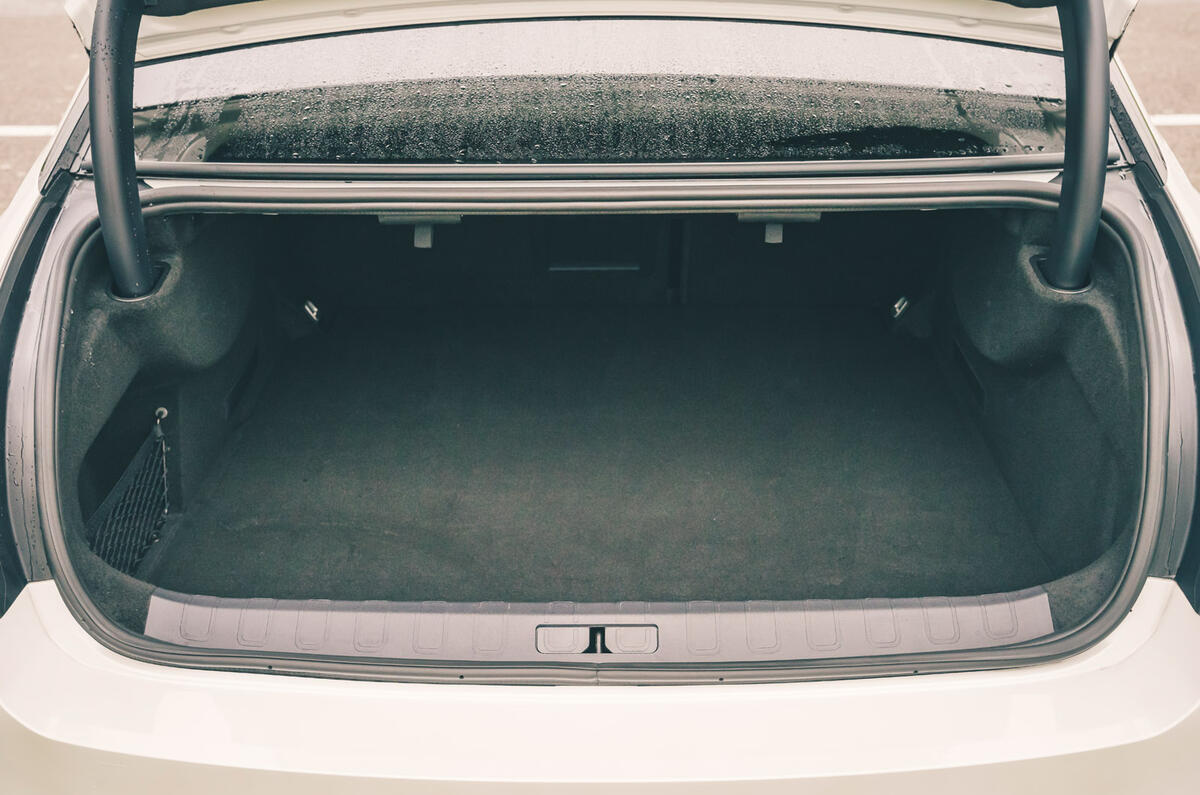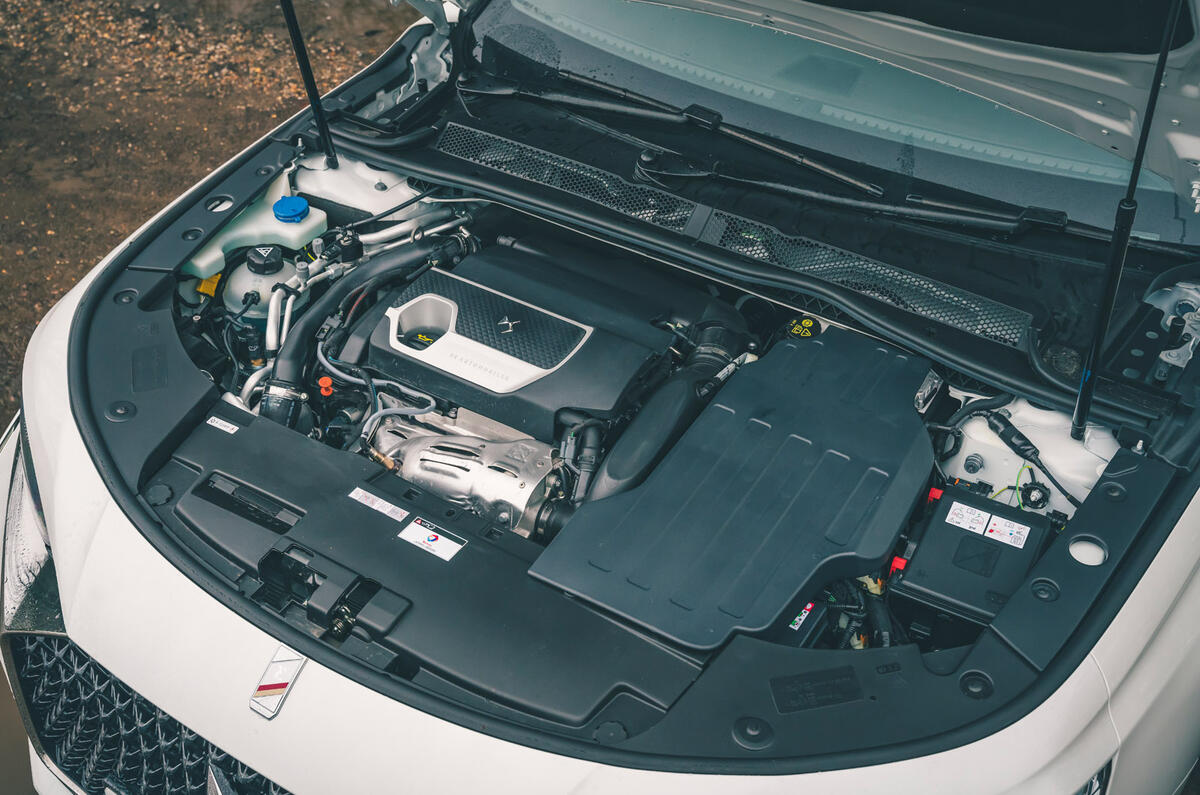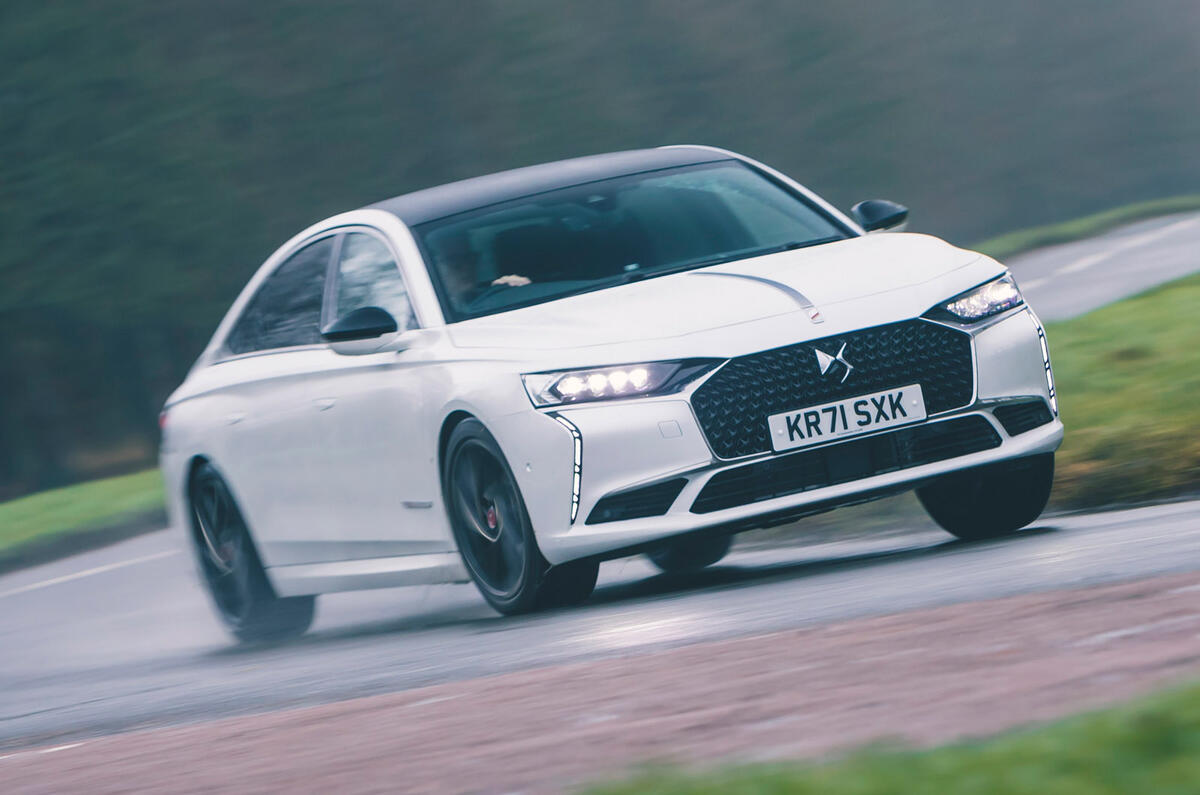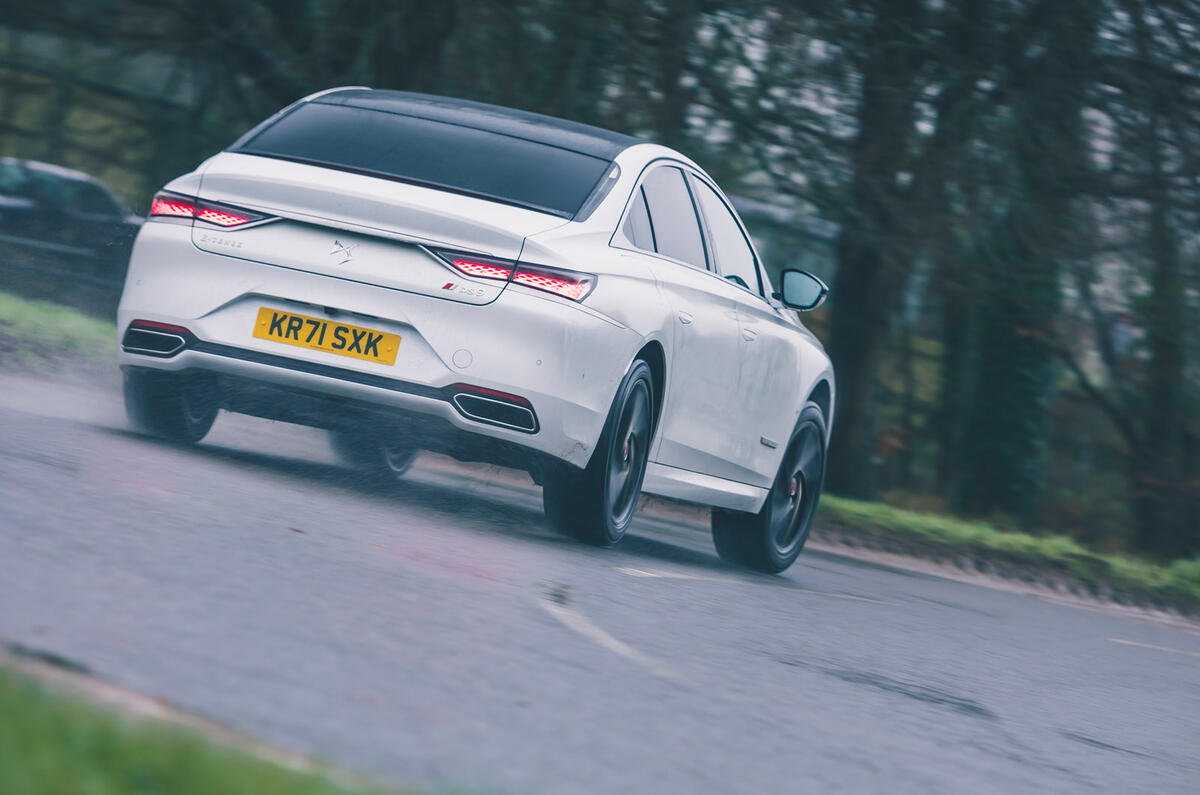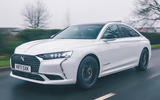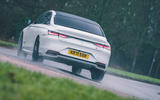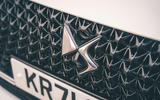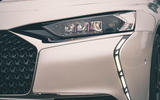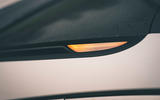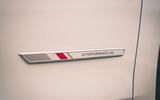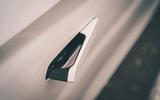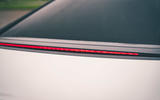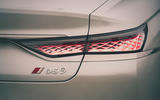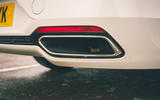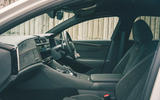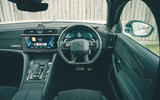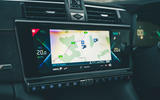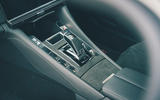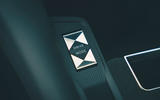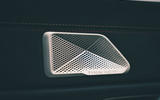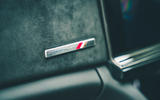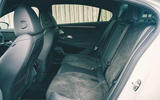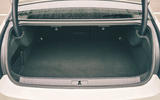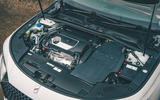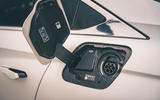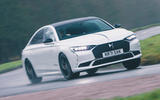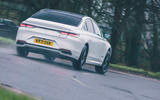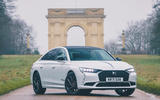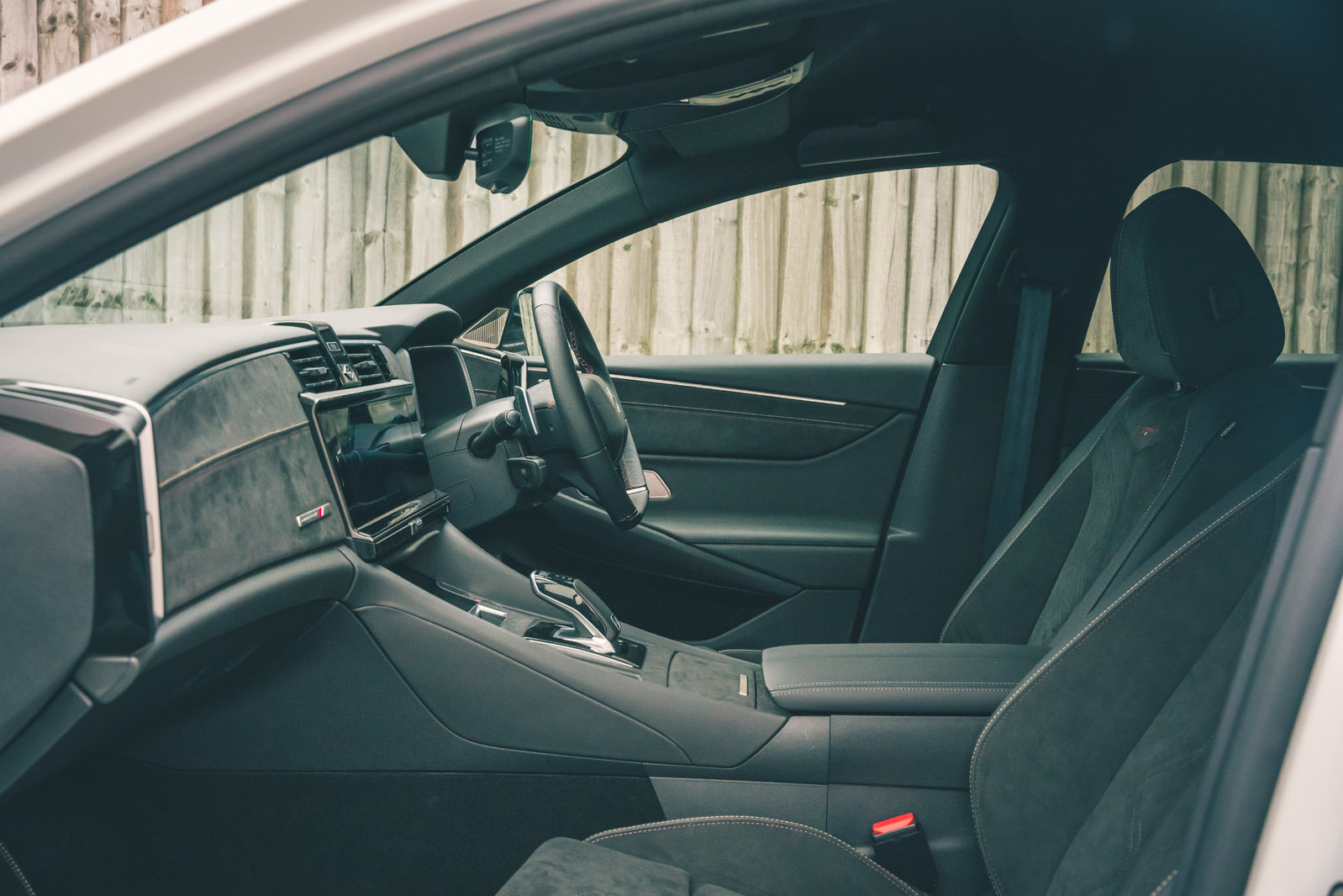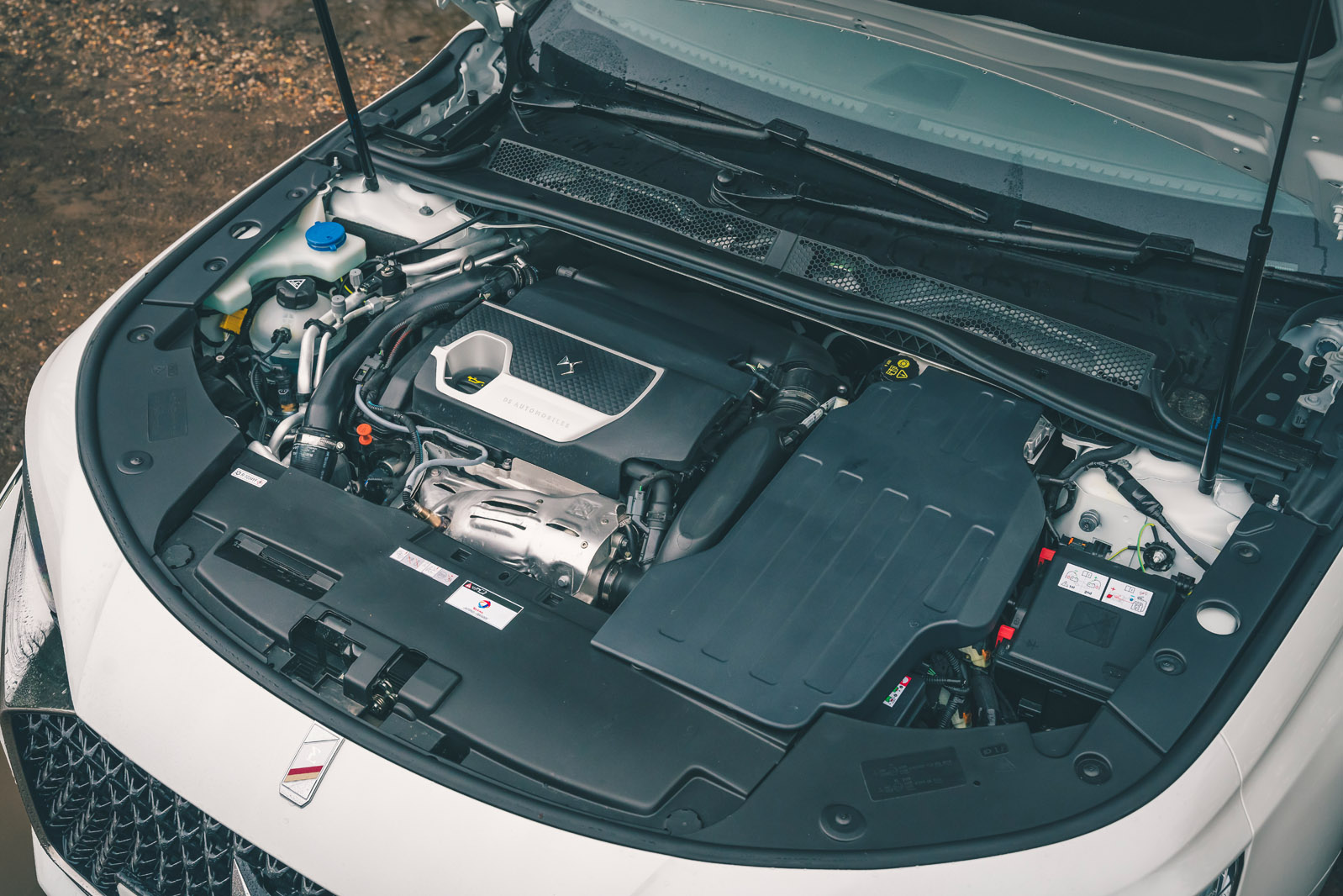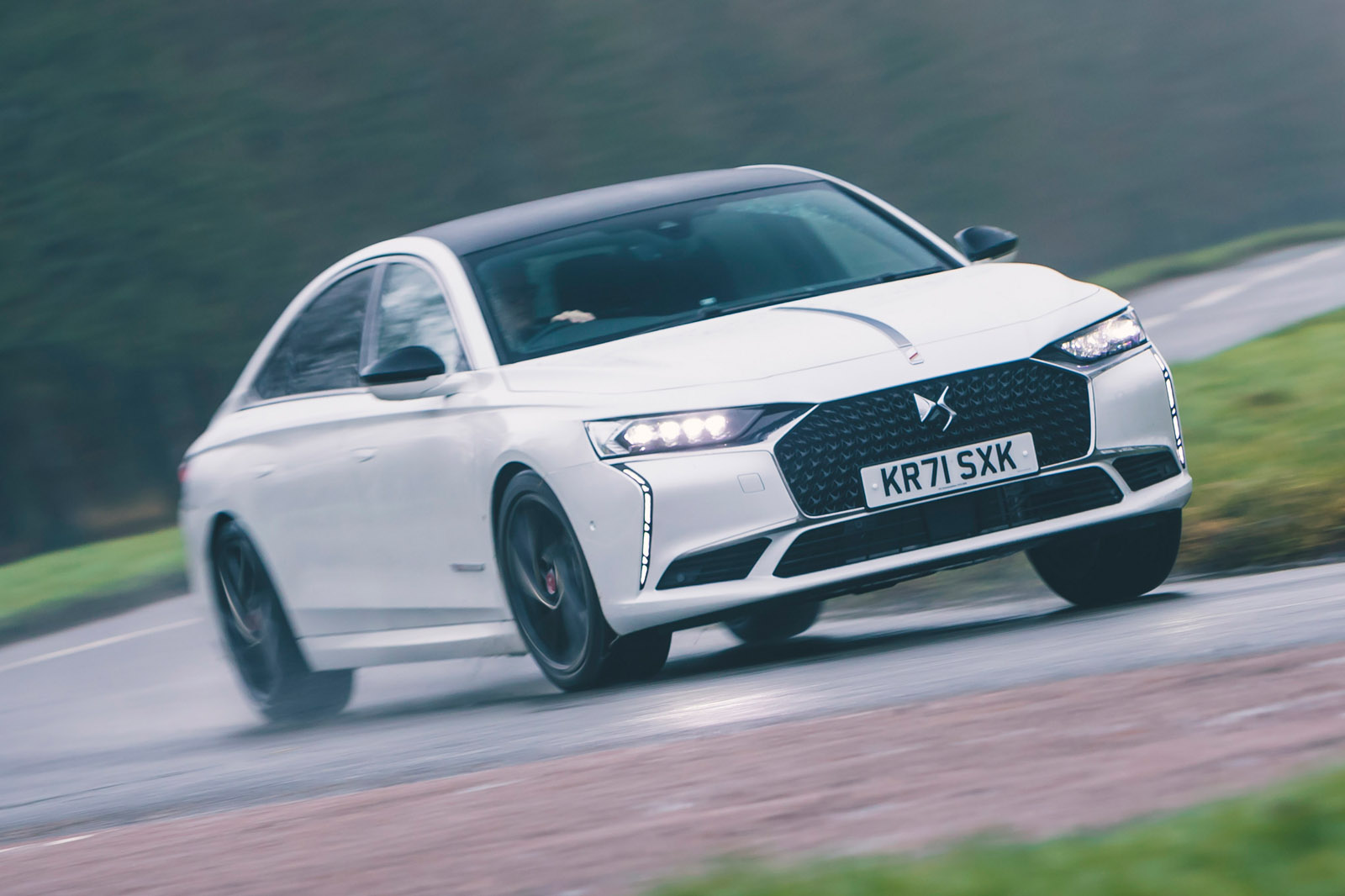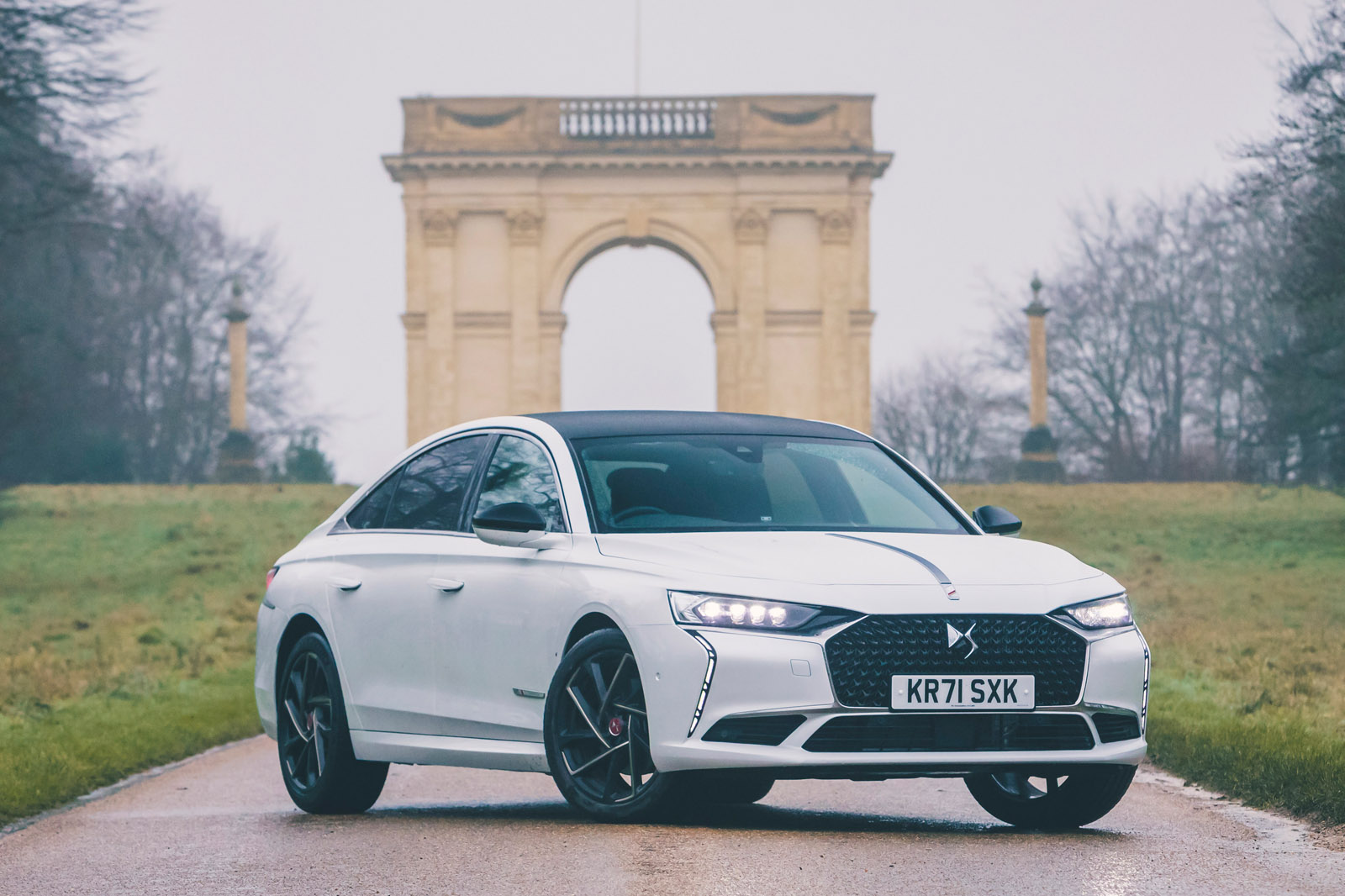The stretched proportions of the 9 lead you to expect distinguishing spaciousness inside, but while you find luxury-level room in some respects, there is less of it in others. Space isn’t the first quality that strikes you about this car inwardly.
Rather, it’s material richness. A concerted effort has clearly been made to produce a lavish driving environment – and it has worked. Our Performance Line Plus test car had grey Alcantara panelling on its door cards, fascia, transmission tunnel and seats, which certainly produced a convincing ‘top-level’ sense of luxury (although several testers wondered how well these materials might weather and resist staining). Those wanting an even more special cabin can find an Alcantara headlining, a full-grain nappa leather interior and even heated and massaging rear seats in any one of several optional interior design theme packages.
Whether you dress your 9 up to the heavens or take it as it comes, you’ll find quality touches elsewhere to match: thickly lined door pockets in which keys shouldn’t rattle around, and ‘feature’ switchgear that is as enticing to touch as it is to look at. In some places, the aura of quality slips a little: the designer air vents feel flimsy, and the BRM clock looked, to one tester, like something “knocked up in a Key Stage 2 crafting session”. However, against an impressively inviting and expensive-feeling background standard, you can forgive the odd quirk.
The driving position is straight and reasonably low set, in front of all-digital instruments and an infotainment system with some usability foibles. Leg room is in generous supply in both rows. Head room is tighter yet at a reasonably generous standard for larger adults, but elbow and shoulder room are somewhat tighter still. This a saloon in which the driver and front passenger can pretty easily bang elbows – not something you’re at risk of in an Audi A6 or BMW 5 Series. It’s not a car that would comfortably accommodate three passengers across the second row.
Boot space is provided in a cargo bay that’s pretty wide and long. It can be expanded by folding rear seatbacks and has useful drop-down hooks to secure smaller shopping bags. Available loading height is eaten into by an audio system amplifier on the underside of the rear parcel shelf, though, which might stop you from easily carrying bulkier flight cases and storage boxes.
DS 9 infotainment and sat-nav
The DS 9 has a 12.0in touchscreen infotainment system as standard, as well as a networked 3D TomTom navigation system. It’s a good-sized widescreen-oriented system with a useful line of shortcut menu keys underneath it and a small ledge on which to anchor a finger before prodding at the screen. It offers wired mirroring for Apple and Android smartphones as standard.
The factory navigation system is easy enough to programme and follow, and mapping is displayed clearly. However, the screen has to carry the air-con controls so the amount of display that you can devote to navigation mapping is markedly reduced.
The system’s general latency is also noticeable. The capacitive shortcut keys under the screen need deliberate contact to work and, allied to the system’s overriding slowness of response, the number of presses or swipes it takes to achieve a particular end result can seem like an unnecessary distraction while you’re driving.


